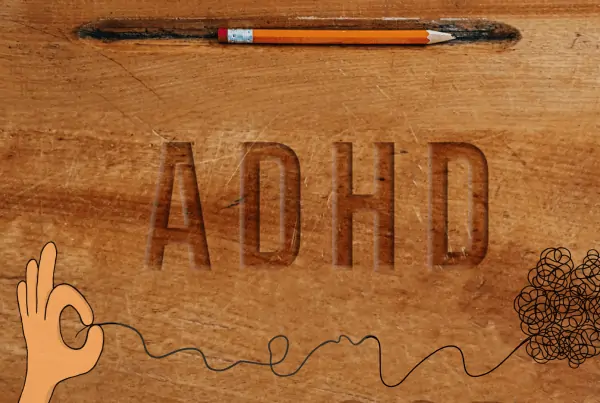A drug testing program
can be an important part of a company, school or drug rehabilitation center’s policy. Some parents have even taken it upon themselves to initiate drug testing in their own homes in the interest of keeping their children drug free.
And while most drug testing programs use the urine drug testing method, there are other ways of testing for substance abuse. We will look at the three most common drug testing methods and the advantages and disadvantages of each.
Instant drug tests and lab drug tests
All drug testing falls into one of these two categories.
Instant tests, as the name implies, can be done on the spot and give you instant results in just a few simple steps.
For laboratory testing, you of course have to go to a laboratory where the tests are performed with sophisticated equipment. Samples can be collected either at the laboratory or collected off site and taken to the lab for testing.
Drug testing programs in business or institutional environments will usually include a two step process that includes both instant and laboratory tests. An instant test will be performed initially and if that returns a positive result, a follow up test on the sample will be performed at a laboratory. These lab tests are important because instant test results aren’t admissible in court. If the test result is to be used for a legal matter, such as termination of employment, for example, the sample must be laboratory tested for confirmation purposes.
The obvious advantage of instant drug testing is that it gives you instant results. The instant drug testing kits are also inexpensive compared to booking laboratory time for drug testing. With many kits, it’s also possible to test for multiple drugs at the same time. Some of them can even test for over a dozen drugs that include all the common street drugs, plus prescription drugs.
As for disadvantages, aside from the fact that the results are not admissible in court, another knock on instant drug tests is that they do give the occasional false positive reading. Even worse, they also give the occasional false negative reading.
On the laboratory side, the advantages are that the testing is handled by professionals and the results can be used in court, as they confirm the presence of drugs. The expense, plus the time it takes to get results, which ranges from hours to weeks, are disadvantages to laboratory testing.
By combining instant drug testing and laboratory testing, costs can be kept down by primarily using the instant tests and only sending the samples that give a positive result away for laboratory confirmation.
Different Types of drug testing
Although you may occasionally see blood and sweat referenced in terms of drug testing, and both those bodily fluids can be used, the three most common ways of drug testing are by using samples of urine, saliva or hair.
It is possible to use an instant testing kit when using urine or saliva to drug test. With these kits, you can collect a sample anywhere (you’ll need a private place for urine, obviously) and test the substances right on the spot. Or, you can collect the samples and have them sent away to a laboratory for testing.
Hair testing cannot be done instantly. Hair samples can be collected any place, but the actual testing will have to be done at a laboratory.
Urine
As far as the most common way to drug test, urine reigns supreme. It’s used in the majority of employment testing, pre-employment screening, military and sports drug testing.
Depending on the type of drug and other factors like a person’s body composition, urine tests can detect drugs in a person’s system from a few hours after they’ve ingested them until about a week afterward, maybe a bit longer.
The instant urine drug tests require a person to give a sample of a certain size and then seeing how that urine reacts with specific chemicals meant to detect drug metabolites.
Tests come in different formats like testing strips, where you dip the strip into the urine, or testing cassettes where you have to transfer some of the urine onto the cassette. A popular instant urine test for obvious reasons is the all-on-one cups where you get the sample donor to fill a cup and you put a lid on the cup and push a button to enact the test, never needing to actually interact with the liquid.
Laboratory urine tests will involve doing an instant drug test (known as immunoassay tests) and if the results are positive, running a more sophisticated (and expensive) test that usually involve gas chromatography–mass spectrometry or a similar type of test.
Obviously the advantages are that this type of testing can be done quickly and relatively inexpensively, plus, because it’s the most common type of drug testing, most people are familiar with it already.
The disadvantages of urine testing are that the sample collection can’t quite be done anywhere. The collection process is also a bit invasive. In some organizations like the military, sample collection must be watched.
And urine tests can be cheated. Some common forms of cheating include:
- swapping in someone else’s clean urine,
- drinking excessive amounts of water or other liquids to dilute the sample, and
- adding a foreign substance (salt, vinegar, bleach etc.) to the sample.
Fortunately, these types of cheating can be easily thwarted. Temperature strips can detect when urine isn’t body temperature, which a fresh sample would be. Also, observation of the sample collection prevents swapping. Many tests can detect watered down samples and properly trained testing technicians will be able to spot a diluted sample, not to mention that most drugs aren’t water soluble so this won’t help people cheat in a lot of cases anyway. Many modern instant tests are also equipped to detect adulterated samples, as well as the aforementioned properly trained drug testing technicians. Laboratories will have safeguards in place to detect cheating.
Saliva
Often referred to as oral fluid tests, they involve taking a swab of fluid from the mouth of the sample donor. The results are available instantly and these tests can detect drug use from about an hour after usage to a few days after usage depending on the type of drug.
The relatively short period of detection is one of their disadvantages.
However, a clear advantage is that the collection process for saliva testing can be done anywhere and can be observed without privacy concerns.
As far as cheating, it has been noted that gum and cigarettes can interfere with the results of these tests, so precautions have to be taken to ensure no gum is chewed or cigarettes smoked immediately prior to the test.
Hair
Hair testing involves cutting several dozen strands of hair from a person’s head or body and sending them to a laboratory for testing (the sample collection can also be done in some labs). Short hair is perfectly fine to use and, as mentioned, body hair can also be used. And while cutting off a person’s hair is obviously somewhat invasive, the hair is cut from the back of the head from a few different spots so as to not be obvious.
In the lab, the hair will be liquified and then split into its various components to check for drug metabolites. A huge advantage for hair testing is that it can check for drug use as far back as three months prior to the date of the test. And, not only can it detect the type of drug used, but also how frequently it was used.
Another huge advantage is that it is impossible to cheat. The internet is full of “advice” for people on how to cheat a hair drug test, but no shampoo, dye or bleach can change the molecular makeup of the hair, which is what the tests look at.
However, aside from the aforementioned invasiveness, hair testing has other disadvantages. It’s more expensive than either urine or saliva testing, there is no instant option and drug metabolites won’t show up in hair until about a week after usage. So, for example, if a person used cocaine on Tuesday and a hair sample was taken from them the following Thursday, the cocaine usage from two days beforehand would not be detected.
Whether used in a professional environment or in the home, drug testing can help keep employees, students, children, athletes and others free from the harmful effects of drugs. Each has its own advantages and disadvantages and which one is best for any given situation will depend on cost and other factors.
About Our Guest Blogger: Lena Butler
Lena Butler is a health blogger and customer service representative for TestCountry, a San Diego based point of service diagnostic test service provider that offers a wide range of laboratory and instant drug and general health testing kits. You can follow Test Country on Twitter and on Facebook. Follow Lena on Twitter as well!









